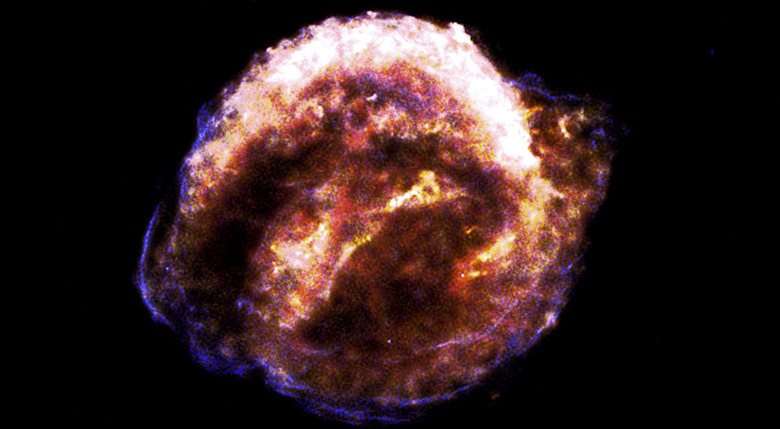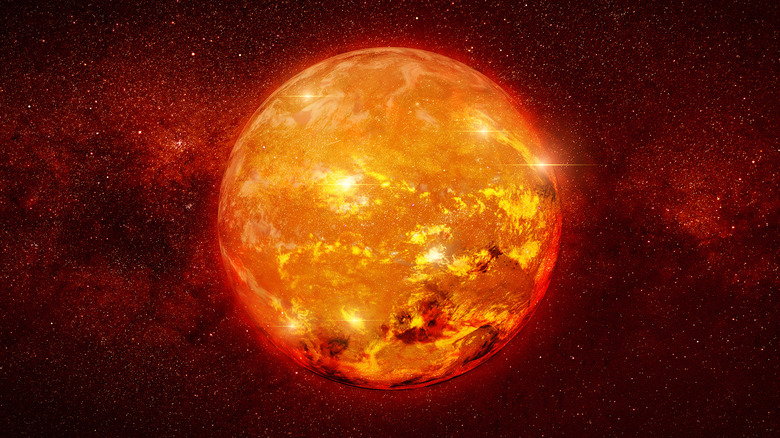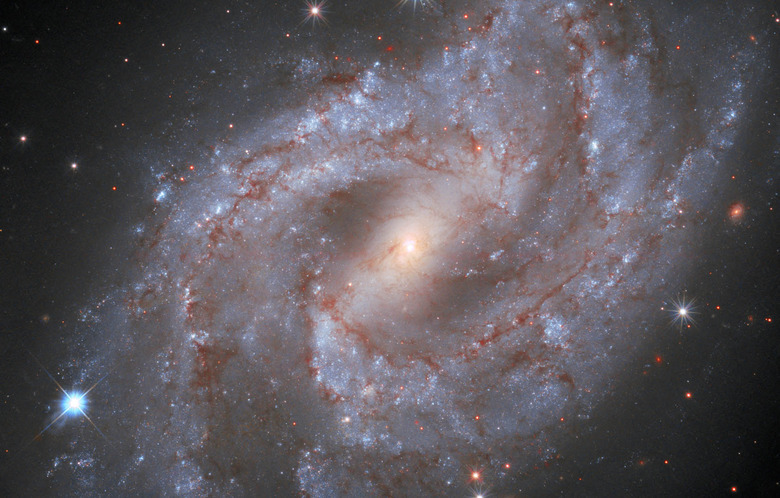Scientists Watched A Dying Star Explode For The First Time Ever
Dying stars can be quite a sight. In fact, they're often considered some of the most dramatic and violent events to take place throughout space. Oftentimes, though, they happen so far away that we aren't able to get a good look at them. That's not the case with a recent dying star, though. In fact, scientists were able to get front-row seats to the death of this celestial giant.
Scientists got to see this dying star take its final breath
Located around 120 million light-years from the Earth, the star can be found in the NGC 5731 galaxy. Recently, scientists managed to capture the final death throes of the dying star using ground-based telescopes. The star was a red supergiant star, and while not the brightest or biggest stars out there, they are massive in volume. In fact, the scientists say the star was at least 10 times more massive than our Sun when it exploded.
A lot of stars tend to erupt into violent releases of hot gas when they start to die. However, astronomers often believe that red supergiants were relatively quiet in the moments leading up to their supernovas. However, capturing this recent star has shown that this isn't always the case. The scientists say that the start erupted into a dramatic self-destructive fashion before it collapses into a type II supernova. This type of supernova is essentially a rapid collapse of the energy in the star before what's left of its core explodes.
The scientists detailed their findings in a study published in The Astrophysical Journal. Additionally, one of the lead authors said that event is a breakthrough in how we understand what massive stars like this do in the moments before they die.
The death of a supergiant
Astronomers discovered the dying star roughly 130 days before its final breath. At the time, the Pan-STARRS telescope located at the University of Hawaii Institute for Astronomy detected bright radiation coming from the area the star was located. The astronomers then observed the dying star using the W.M. Keck Observatory Low Resolution Imaging Spectrometer in Hawaii. They named it supernova 2020tif.
"It's like watching a ticking time bomb," Raffaella Margutti, a senior author on the study, said in a statement. (via CNN) Margutti also said that they have never confirmed such violence in a dying red supergiant until this star.
With this new knowledge of how red supergiants die, scientists can dig deeper into the mysteries that still surround these massive balls of energy found throughout our universe.


